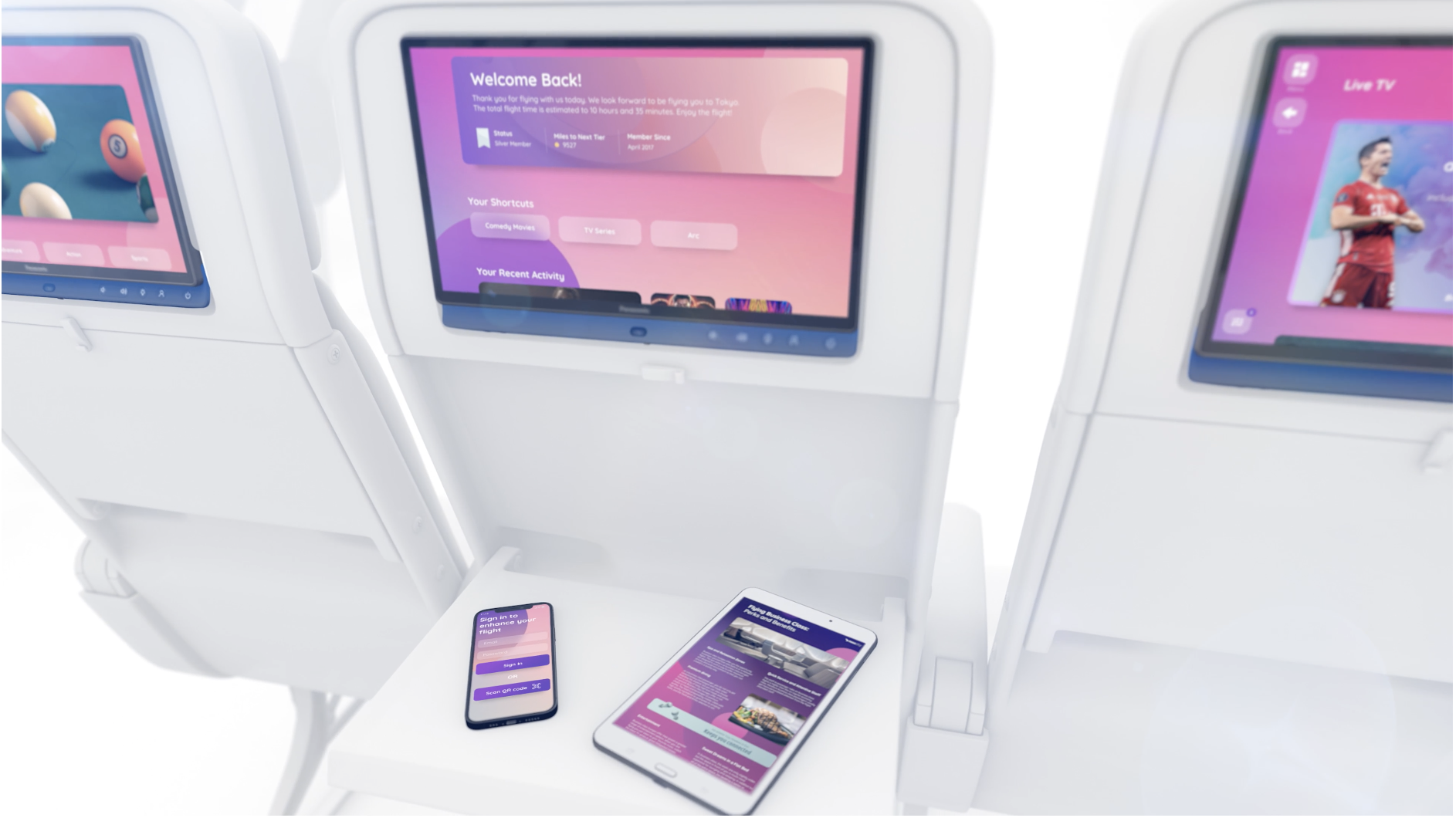Finally, in-flight movies will come on OLED TVs that work with your AirPods
Meet the next-gen Astrova in-flight entertainment system

United Airlines has unveiled a next-generation inflight entertainment system that fixes the two biggest complaints with watching plane movies: the image quality, and the lack of support for the best wireless headphones.
The flight carrier has buddied up with Panasonic to install the firm’s newest Astrova in-flight engagement (IFE) solution, becoming the first US airline to outfit to use it. The system features OLED displays, much like the best OLED TVs, which is great news because of the self-lighting pixels (read: organic light-emitting diode, aka OLED) that define this kind of technology. Essentially, OLED panels offer rich, precise contrast in way that means they feature heavily in our list of the best TVs.
How big are the screens? Panasonic tells me first class flyers get 13-inch monitors, while those in economy can enjoy 10-inch screens, but there's more: the new TVs will support Bluetooth 5.0 connectivity, so you can pair any of our pick of the 3 best noise-cancelling earbuds to pack in hand-luggage or the best noise-cancelling headphones, including of course Apple's ubiquitous AirPods Pro 2 and AirPods Max.
Panasonic was the first company to bring Bluetooth connectivity to aircraft cabins – within the firm's X Series in-flight entertainment system in 2015 in case you were wondering – although it didn't deliver 'full-cabin Bluetooth' until 2021. It says delivering rock-solid Bluetooth connections throughout an airliner is a hard ask, and we hear that – although we're a little disappointed not to see Bluetooth 5.2, so Bluetooth LE Audio and Auracast audio sharing (which would be ideal on an aircraft) can't come onboard as things stand.
Opinion: not since Devialet's in-seat stereo speakers have I been so excited about music on a plane
Panasonic says the latest Astrova system is designed to make the "transition from passenger’s personal devices to in-flight entertainment seamless," and to that end the screens sport two 67W USB-C chargers on the bottom-left edge (useful for juicing up your phone and tablet ready for landing), plus the ability to interface with your device(s) and customize what you see on the Panasonic OLED screen in front of you, thanks to a companion app.
Interestingly, Panasonic also touts "a range of audio fidelity enhancements," including an independent left-right signaling system where content is sent to each of your earbuds simultaneously (rather than sending it to one, then allowing said 'bud to inform the other), thus avoiding signaling issues, and meaning you can use one earbud by itself to stay abreast of the drinks service situation or take care of your child.
Perhaps one of the most novel (albeit potentially breakable) features of this system is the removable peripheral bar, almost like a scaled down Bang & Olufsen Beosound Theater. As you'll know if you read our B&O Beosound Theater review, it's modular, which in the case of the Astrova should allow the airline to make quick hardware modifications without switching out the entire display.
Sign up for breaking news, reviews, opinion, top tech deals, and more.
And the wildest idea here? Panasonic says that with Astrova, passengers can "extend your branded environment with integrated LED lighting to create a holistic cabin experience". That's right, you can make your spot in the cabin an ode to Philips Hue and Ambilight, if you'd like.
Of course, it remains to be seen how good it'll be, and how immersive the promised "premium home theater environment" can be. But it'll certainly better that much of what's out there currently. Suffice to say that not since the headphone-nixing Devialet Safran airline seat stereo speakers (which use the same drivers as those found in the splendid Devialet Dione, one of the best Dolby Atmos soundbars around) have I been so excited about the sound on an aircraft – and also, we'll even get it in coach. Thanks, Panasonic!

Becky became Audio Editor at TechRadar in 2024, but joined the team in 2022 as Senior Staff Writer, focusing on all things hi-fi. Before this, she spent three years at What Hi-Fi? testing and reviewing everything from wallet-friendly wireless earbuds to huge high-end sound systems. Prior to gaining her MA in Journalism in 2018, Becky freelanced as an arts critic alongside a 22-year career as a professional dancer and aerialist – any love of dance starts with a love of music. Becky has previously contributed to Stuff, FourFourTwo and The Stage. When not writing, she can still be found throwing shapes in a dance studio, these days with varying degrees of success.